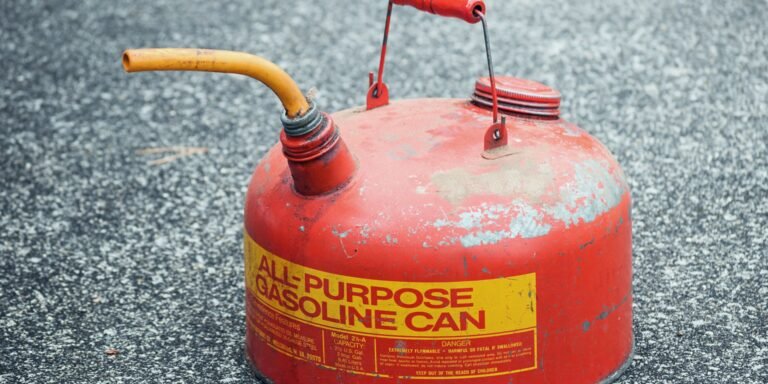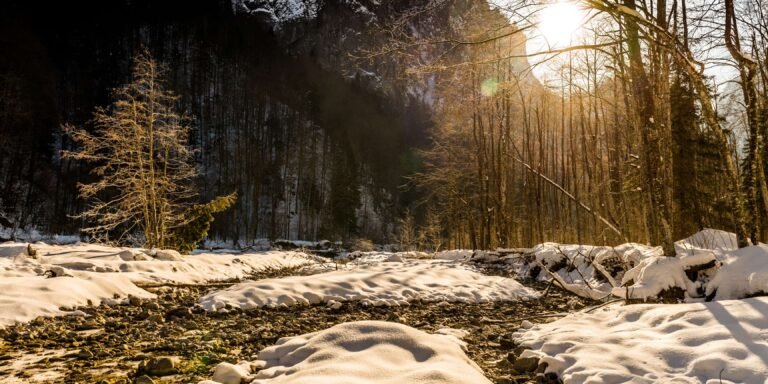What To Think About When Looking For A Bug Out Location
This post may contain affiliate links, full disclosure here.
Things will quickly spiral out of control if SHTF. Panic rooms and sturdy cellars will not always suffice in an emergency – at least not for long. It’s best to cut your losses, leave for a while, and wait out the crazy world somewhere safe and cozy.
Preparation is the most important aspect of any good bug-out location. Clear all legal red tape as soon as possible and as efficiently as possible. Familiarize yourself with your post-disaster home and the route you’d take to get there. Make sure your home is difficult to find – whether from animals or unwanted humans. Spend time at your bug-out location to get a better understanding of your future potential living conditions, and strive to live a sustainable life.
The best way to deal with complications is to avoid them entirely. The headings below serve as a handy checklist of the most common issues that can arise in these trying times.
What To Think About When Looking For A Bug Out Location
Legal Stuff
While bug-out locations are intended for SHTF situations, all preparations must be made during much calmer times. Make a point of resolving any red tape that may arise and cause you problems in the future. Legal considerations differ from state to state, and you’re unlikely to get the benefit of the doubt if mistakes are made. Make an effort to keep yourself informed at all times.
A building permit is one of the most important things to obtain. Failure to complete this critical step results in consequences ranging from exorbitant legal fees to the destruction of your unauthorized property.
A building permit also increases the property value of a building, which is a good investment in certain types of SHTF situations. When society returns to normalcy, you may find yourself with a very valuable piece of real estate.
Building codes are another factor to consider. Building codes exist to assist you in meeting the minimum safety standards for a specific region. While you are not required to follow these building codes – especially if you declare your property to be on a smaller scale – you do not want to skimp on safety measures for your emergency retreat. Strive to meet your city’s minimum safety requirements for construction.
Disaster Risk
When the SHTF, there will be no real avenues for government or insurance relief. Without the ability to rely on society, disasters will be far more difficult to manage, and the consequences will be far more severe. The first step in troubleshooting these issues is to gather information about yourself.
Earthquakes are one of the most devastating natural disasters, posing serious risks to infrastructure and landscapes. At certain magnitudes, splitting concrete and brick foundations are not uncommon, and quakes have the potential to change the entire topography of the area. They also arrive with little to no notice. There has never been a major earthquake detected.
Flooding can wreak havoc on your new home’s sanitation, refrigeration, power, and even structural integrity. If the flooding extends beyond the threshold of your new home, appliances and exposed wiring could pose a risk of electrocution. They also strike quickly: flash floods can form in a matter of hours and devastate low-lying or erodible areas.
When choosing a bug-out location, stay away from bodies of water in the immediate vicinity – these are prone to flash floods. Surrounding forests are ideal because they reduce soil erosion’s susceptibility and impact. Settling on higher ground is also an option to consider, and it is strongly advised to reduce the risk of flooding.
While all disasters are difficult to manage without assistance, earthquakes and floods are among the most disastrous for an isolated lifestyle. Both happen quickly and with little forewarning. Keep an eye out for declared fault lines and flood-prone areas for your future home – you don’t want to find out when SHTF happens.
Familiarity
When things go wrong, bug-out locations are designed to be used indefinitely and for an extended period of time. Make an effort to become acquainted with your potential future shelter. Being caught off guard when SHTF is something to avoid at all costs – second chances will be limited in a disaster situation.
Accommodations
Spartan living conditions are not for everyone. At the same time, financial constraints and a lack of long-term resources when SHTF make certain creature comfort temporary at best. There must be a balance struck between what is required for survival and what is required to live a proper, fulfilling life.
When things go wrong, the most obvious loss will be entertainment, and streaming media platforms will almost certainly suffer as a result. Make a backup of your offline entertainment. A hard disk-based media library could do wonders for morale if off-grid power can be maintained. Printed media such as books and magazines should also be kept on hand in case technology is not available.
Make sure your bug-out location is well-stocked with enough canned goods to last you a long time. Complications such as long winters or unsuccessful hunting trips could jeopardize the availability of sustainable resources. Maintaining a reliable safety net is beneficial while adjusting to the new, post-SHTF normal. However, get some practice in before then.
Begin shopping for decent clothing as well, emphasizing function over form. Long-sleeved shirts and pants, as well as functional hats, jeans, and jackets are effective against insects and other vexing pests. Keep them away from fire and moths.
Medical and sanitary supplies will also be in short supply by this point. Make sure you have plenty of disinfectant products on hand, such as rubbing alcohol. Gauze and bandages are also required, especially if you intend to live an outdoor lifestyle. Don’t forget to prepare specific hygiene products based on the planned company.
Safety
A bug-out location should be difficult to find. People will not be at their best when SHTF, so you must prioritize the safety of yourself and your loved ones. Advertisement of your preparedness will only backfire in the face of desperate people and limited supplies.
Heavy traffic areas and evacuation routes should be avoided. People will congregate and crowd the area, and it will only be a matter of time before you are swamped with befuddled and distressed refugees. Take note and avoid settling in those areas.
Proper vantage points are critical for detecting potential intruders. For this purpose, keep as few blind spots as possible. Humans aren’t the only dangers to be aware of; scrounging animals can be dangerous when stressed, and SHTF situations have a tendency to spill over into the environment. The influx of destructive humans is likely to agitate animals just as much.
To reduce potential activity from wandering individuals, implement a lights-out policy at night. Keep the exposure of your trails, paths, and residence as low as possible. To reduce glare during the day, tint your windows with non-reflective tape.
You want as few people as possible wandering onto your bug-out location and those who do just passing by unnoticed.
Hiding should hopefully suffice but be prepared for the possibility that it will not. It’s better to be safe than sorry, so make sure you have some form of protection on hand. It should always be regarded as a last resort. SHTF situations will be difficult to manage as they are, and escalating to violence may exacerbate an already difficult living situation.
Weather
On a more mundane note, it’s critical to understand how the seasons affect your bug-out location throughout the year. A fantastic summer shelter may be woefully inadequate for keeping you warm in the winter. It is best to learn about the limitations of your shelter while the world is still relatively stable.
Make sure to stock your shelter with items that are appropriate for the weather. Thick winter clothing is essential, as is fuel for warmth and enough supplies to last the season. When the insects start buzzing around in the summer, long-sleeved shirts and pants come in handy.
In warmer climates, heat must dissipate, so your building materials must account for this. Stone is a good heat conductor, which could make summer living conditions difficult. Wood allows for cooler summer days, but it is prone to deterioration in humid weather conditions.
Weather and Animals
While most animals are afraid of humans and will usually flee when they see us, fear is only a temporary deterrent. Our presence may even make them nervous, especially if the species is territorial, caring for their young, or starving.
Animals in the area may become acquainted with your territory over time, reducing the effect and your subsequent safety. They may enter your property for a variety of reasons, and unfortunately, many sustainable living resources (such as gardens, livestock, shelter from the elements, and water) may also attract roving woodland creatures.
Certain animals may even associate the presence of humans with food. This could result in hungry or curious critters raiding your food storage areas. Bears are one of the most dangerous examples, having been known to disrupt camping trips and pry open car doors in search of future meals. Smaller animals, such as raccoons, have figured out how to open coolers and cabinet doors. Avoid these encounters by screening for and preparing for the expected local fauna.
Seasonal bugs are an issue that often goes unnoticed – hay fever isn’t something you want to be caught off guard for. Many plants are toxic when exposed, with common side effects ranging from skin irritation to nausea.
Make sure to screen for allergy risks at a convenient time, as medical care will be limited at best when SHTF. Make sure you’re up to date on the plants in your bug-out location.
Navigation
Make sure you can find your bug-out location regardless of where you start. Make a note of them in some way for future reference. The most common and accessible method is to register the area on a travel app such as Google Maps or Waze.
While this is a very simple solution to the problem, it should not be relied on. If SHTF, internet access and data-driven technology will not be guaranteed. During that critical time in transit, every second counts, and you simply cannot afford any downtime. This problem is mitigated by a printed map and proper navigation experience.
As a backup, digital or printed methods are available, but your primary travel plan should always be based on personal familiarity with the route. This gives you yet another reason to return to your bugout location on a regular basis. Make sure you have a good plan for getting to your bug-out location – practice while the stakes aren’t as high.
Vehicle
Your primary modes of transportation – cars, bicycles, and simply walking – each have distinct advantages and disadvantages. That doesn’t mean you have to limit your options; in fact, if you can pull it off, a combination of the three is actually encouraged.
Automobiles provide the most storage space, travel capacity, comfort, and safety. This comes at the expense of their fuel consumption, maintenance requirements, and noise level. Fuel consumption is a concern that is exacerbated by scarcity and a lack of sustainable sources. If your own power generators use the same fuel, the demand multiplies.
Stockpiling fuel will not work because gasoline has a shelf life of 6 months and diesel has a shelf life of about a year if stored properly. After that, efficiency plummets precipitously, causing harm to any engines that use them. Electric vehicles may fare better in these situations than their gasoline-powered counterparts, and they may even be powered by solar energy.
Bicycles are extremely cost-effective modes of transportation, requiring nothing more than the mechanical energy of your own body. Bicycle maintenance is relatively simple, with spare parts and tire patches covering the majority of common bicycle repair needs. Bicycles are also a healthy mode of transportation.
Finally, you could simply walk away. Aside from fitness, socks, and shoes, there isn’t much to consider for this route. Maintain a functional fitness regimen that includes some cardio, as most cars and fuel will be out of service within a year. Wear comfortable socks and change them as needed for hygiene. Finally, invest in high-quality shoes that can withstand rough terrain. Choose high-quality options because you are unlikely to come across good pairs for sale in the future.
Traveling by car to your bug-out location would be the most practical option. It is the safest method on the list and allows for the transportation of individuals and critical goods in reasonable quantities.
Shelter
Another important consideration is the type of shelter you’ll have for your bugout location. While some off-grid properties come with existing structures, they may not always be suitable for your requirements.
Specific shelter types are far more complex than this article can cover, but building considerations remain important. Each material has advantages and disadvantages.
As previously stated, wood is a common, low-cost building material that can be obtained from the surrounding area. It is, however, susceptible to gradual decay caused by rot, mold, and water. Wood is also prone to shrinkage over time, making it more vulnerable to structurally compromising damages – particularly fires.
Stone and concrete do not pose these risks, but they do conduct heat with uncomfortably high efficiency. Precautions must be taken if your shelter is to withstand the sweltering summers. They are also more expensive to buy and prepare, making them difficult for those on a tight budget.
The key point here is to plan ahead of time. Ascertain that you have a clear understanding of what to expect from your location, and then design to meet your needs accordingly.
Living Experience
Understanding your day-to-day experience is critical for selecting a bug-out location, and this experience includes more than just weather patterns. Try to identify and locate promising assets in the surrounding area. A short distance away, the forest could be a great place to go game hunting. Rivers and lakes can be a good source of both fish and water. That acre of undeveloped land could be ideal for a gardening plot or a solar power farm.
On a more subdued note, the experiences range from the inane to the mundane, such as where the breaker for your electrical line is or where you’d hang your laundry to dry. Consider it as attempting to break into your new home and transform it from an emergency shelter into a cozy home.
Travel
All of your preparation will be futile if you are unable to reach your bug-out location. You can never predict where you will be when SHTF. Always have backup transportation plans in place to get you to safety in the event of an emergency.
Consider Sustainable Living
Most of the comforts we know and love are suddenly dependent on very limited resources, making sustainable living critical. Making the most of what we have simply isn’t enough to last for years – the key is establishing ways to acquire them in a sustainable manner. Fortunately, most sustainability tips for bug-out shelters overlap with what is required for off-grid living.
Food
There are a few ways to obtain food in a survival situation that are both sustainable and meet a variety of nutritional needs. Try to become acquainted with as many methods as possible.
Setting up a prepper garden is a great way to not only grow vegetables but also compost some of your own garbage. It’s less strenuous than most entries in this subheading, and there’s no risk of getting hurt or going home empty-handed. Select a nice, clear plot of land on your property and begin supplementing your own dietary needs. Carrots, radishes, and spinach are examples of staple dietary mainstays that can be grown in 1-2 months.
Fishing is a good source of both entertainment and protein, and it only takes patience, bait, and a large body of water to get started. Fish oil has also been shown to improve one’s health, with benefits such as lower blood pressure, reduced inflammation, and healthier heart conditions. While it varies by location, you can usually expect to catch an edible fish in under or around an hour – get you to practice in while you still can.
You could also try your hand at a hunting game on occasion. Forests are great places to find plentiful amounts of the quality game – a single deer can easily provide around sixty pounds of good meat. Smaller animals, such as rabbits or chipmunks, can also provide food for you and your family. Having said that, hunting can be dangerous. If things go wrong, you could come home with a good haul, empty-handed, or not at all.
Raising livestock could provide an alternative method of obtaining meat at a much lower risk. Chickens, rabbits, goats, and pigs are some of the more common livestock animals. While cows may appear appealing for their milk, goats provide similar services at a more manageable size in a survival situation. Make sure you read up on proper livestock animal handling procedures and practice them before SHTF.
Water
A human being requires approximately two gallons of water per day to function – one for drinking and the other for various tasks such as washing and cooking. Humans can usually go thirty days without food, but only three days without water. It is critical for long-term survival to be able to source your water on a consistent basis.
Clean water is best when it is only a short distance away. When it rains, settling too close to a body of water may pose a flood risk. Animals are also very likely to live in that area. Play it safe and minimize those risks, but keep your water source within a comfortable distance.
There are several methods for making your water potable. The most straightforward method is to use boiling, which safely kills most bacteria and protozoan contaminants. Chlorine and iodine tablets serve a similar purpose and can be used when you don’t have time to boil water (i.e. when traveling).
It’s worth noting that, while filtration and purification appear to be similar processes, they actually serve different purposes. Filtration is primarily concerned with the removal of impurities such as sand particulates or bacteria, and it is typically accomplished through the use of physical methods such as mesh strains. Purification aims to cleanse everything dangerous, including microscopic dangers such as viruses.
Electricity
When the SHTF, electricity is a welcome utility, providing lights, heating, appliance use, and other creature comforts in your post-SHTF home. It can be generated using either generators or solar panels.
Propane, diesel, and gas generators each have advantages and disadvantages. The type of generator you intend to use is determined by user preference and convenience.
Gas has a relatively short shelf life of three months. Diesel can last a little longer, and can even be stored for up to a year without causing any problems. Propane has the longest shelf life, lasting at least thirty years. In fact, this limitation is due to the container – propane has an indefinability.
Propane and diesel generators typically consume three gallons of fuel per hour. With limited stock and storage, this method will eventually fall short due to a lack of tenability.
Solar energy has the potential to alleviate our reliance on finite energy resources. Another advantage is that solar panels require little maintenance, such as general monitoring and cleaning, to stay efficient. Solar power does have a few notable drawbacks, including weather dependence, limited energy storage, and high initial investment.
Storage
Most of your daily necessities should, ideally, be renewable. Your ability to seek out those needs may be limited or restricted in certain circumstances. Some days you’ll be too sick to work in your garden, and other days the weather will be bad. It is critical to have adequate storage facilities in order to prepare for these unforeseen events.
Perishable goods could be safely stored in an icebox or off-grid refrigerator. A good storage tank can meet all of your water needs; even the most basic models can hold at least 2,500 gallons of water. Clothing, canned goods, and old books can all be stored in dry storage cabinets. For more options, a cellar, attic, or shed could be built.
When someone or something is desperate to get at whatever is in the supply cache you’ve hidden away, a locked door won’t help much. Make sure to keep them hidden from both people and wildlife, especially if they contain food. Scent profiles can be reduced significantly by using airtight and sealed containers.
Bottom Line What To Think About When Looking For A Bug Out Location
When deciding on your bug out location, there are numerous factors to consider, the majority of which will be within your control. Prepare and familiarise yourself thoroughly before SHTF, because preparation is half the battle. Choose wisely and stay safe in your preferred bug out location.








